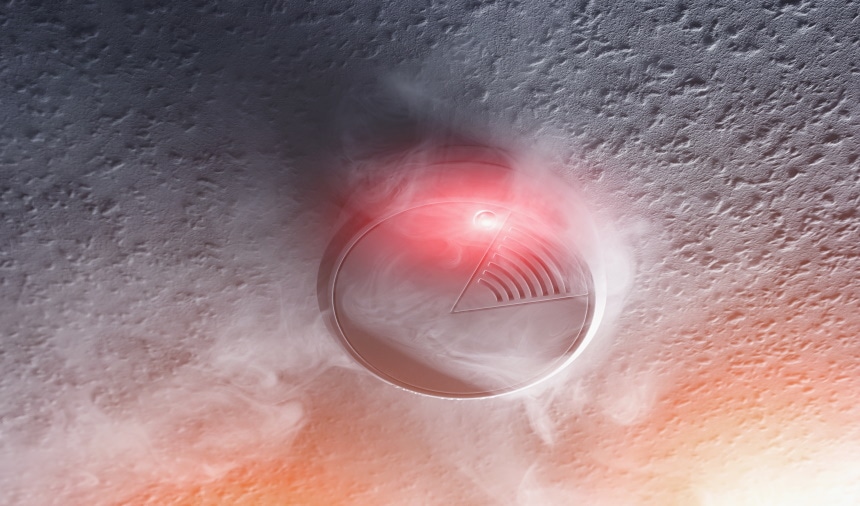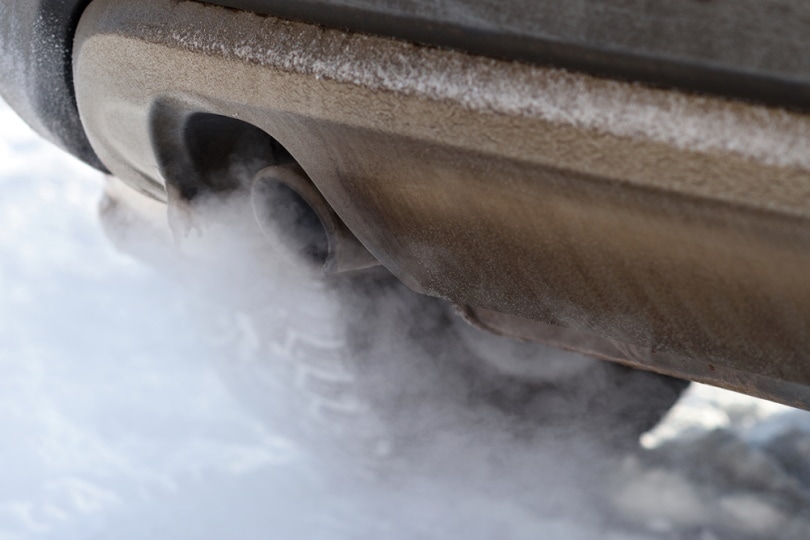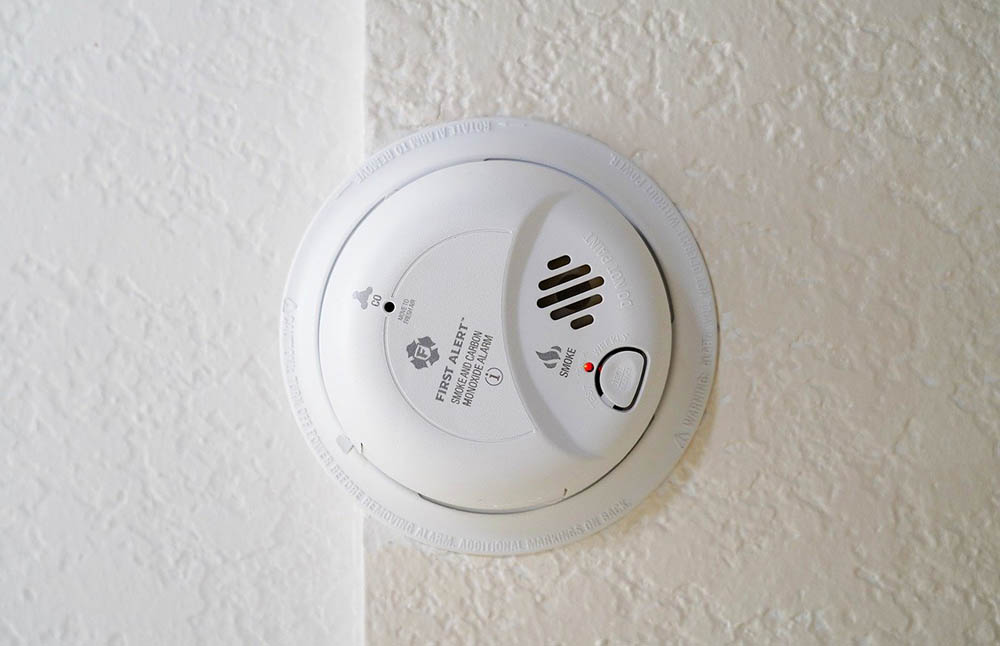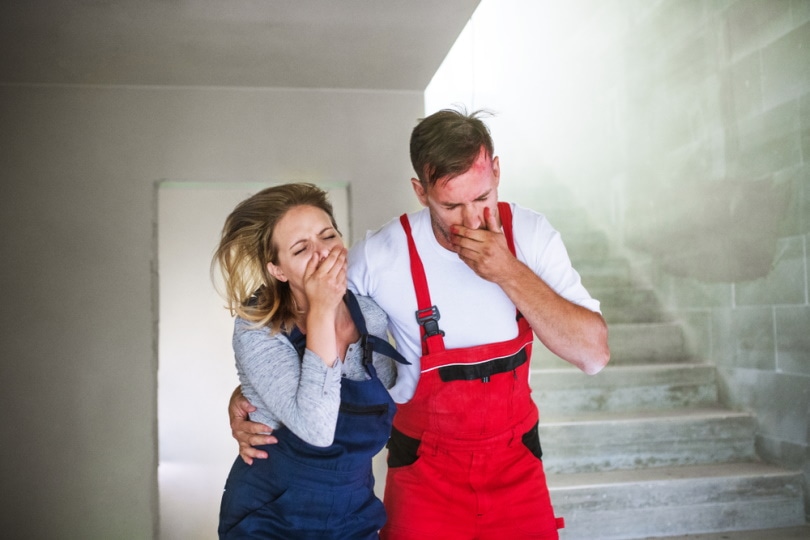What Does Carbon Monoxide Smell Like? Warning Signs, Causes, & FAQ
-
Kristin Hitchcock
- Last updated:

Carbon monoxide is completely odorless. Therefore, it is extremely dangerous because many people do not realize that they are breathing it in. Plus, it is colorless, as well. It is very easy for carbon monoxide to go unnoticed until the people in the home begin to show severe symptoms.
Therefore, carbon monoxide is one of the “preventable” deaths that are hardest to prevent. Usually, recognizing the symptoms and getting a detector is the only way to protect yourself from carbon monoxide poisoning.
How Do You Know if You’re Smelling Carbon Monoxide?

You won’t be able to tell if you are smelling carbon dioxide because it is completely odorless and tasteless. Therefore, it will go undetected until you begin to show symptoms or until an alarm goes off. If you don’t have a carbon monoxide detector in your home, it is very easy for carbon monoxide to go unnoticed.
Carbon monoxide poisoning can be fatal. However, even low levels of carbon monoxide can be very bad for your health without necessarily killing you. People may continue to expose themselves to low levels of carbon monoxide without causing fatal effects for some time.
How Can You Tell if There is Carbon Monoxide in Your Home?

It can be difficult to determine if there is carbon monoxide in your home. Often, the only way to know is to have a detector installed. You should have one of these installed on every floor of your home and near appliances that may cause a leak, such as furnaces. This step is the best way to protect yourself from carbon monoxide poisoning.
However, there are some signs of condensation that you might be able to notice. For instance, sooty or yellow stains on leaking appliances can be a sign of long-term carbon monoxide spread. Fumes from fireplaces and other fuel-burning appliances can be a sign that extra gasses are seeping into your house, which may include carbon monoxide.
Stale or stuffy air can be a sign that the air in your home isn’t fresh. Instead, it may be full of gasses you don’t want, like carbon monoxide. A lack of airflow in the chimney flute is a sign of improper ventilation, which can cause carbon monoxide to build up.
A yellow burner flame can sometimes be a sign of carbon monoxide. However, some appliances are designed to burn a yellow flame for aesthetic purposes. If your stove suddenly switches to a yellow flame, though, carbon monoxide may be to blame.
As you can see, most of these signs simply point to the right conditions for a carbon monoxide leak—not an actual leak. Therefore, they aren’t extremely reliable, though they still shouldn’t be ignored.
What Are Warning Signs of Carbon Monoxide Poisoning?

Sadly, the symptoms of carbon monoxide poisoning mirror the symptoms of other diseases. Therefore, many people simply think they are developing a cold. Usually, it isn’t until much later that the symptoms become troublesome when those affected seek out medical attention (if they seek it out at all).
Symptoms of carbon monoxide include:
- Dizziness
- Weakness
- Confusion
- Breathing difficulties
- Chest pain
- Muscle fatigue
- Headache
The symptoms are not always consistent. Sometimes, the leak isn’t constant, so you won’t get constant exposure. Sometimes, you may notice a clear change in the symptoms when you change locations. For instance, they may go away if you spend time outside.
What Causes Carbon Monoxide Poisoning?
Carbon monoxide is usually produced by appliances that heat or cook. Often, when they aren’t installed correctly or become faulty, they may produce carbon monoxide. Because this gas is colorless and odorless, it is fairly easy to become “poisoned” and not seek help. Because poisoning causes people to become sleepy, many simply go to sleep and don’t wake back up.
- Portable generators
- Wood, gas, and coal fires
- Gas cookers
- Ovens
- Gas broilers
- Paraffin heaters
Responding to Carbon Monoxide Poisoning

If you believe that you may have carbon monoxide poisoning, you should remove yourself and anyone else from the home as fast as possible. Stop using appliances if you are doing so. While the leak doesn’t always come from appliances, you should shut off any that you can easily and quickly.
Open any windows and doors that lead to the outside. You preferably want airflow throughout the whole house, as this will remove any unwanted gases. Next, you should go outside. Be sure to bring everyone in the home out with you, including pets.
Next, you should get medical care as soon as possible. Carbon monoxide poisoning can lower blood pressure and raise your heart rate, which can cause problems even after you’ve removed yourself from the situation. Children should especially get medical help, as they are smaller and more susceptible to carbon monoxide.
Do not return to the house until it has been cleared.
How Long Does It Take to Get Carbon Monoxide Poisoning?
It depends on how concentrated the carbon monoxide is in the air. Usually, it is not very concentrated. Therefore, you can often go some time without getting any negative effects. But if it’s concentrated, those in the area can develop deadly symptoms very quickly.
In some cases, it may only take 5 minutes for extremely high amounts of carbon monoxide to kill a person, especially if they are very young or very old. It takes only 1–2 hours in most at-home situations for symptoms to develop.
Therefore, carbon monoxide poisoning that occurs at night can often kill the household before they wake back up. Because carbon monoxide makes people even sleepier, it can easily be a very dangerous situation.
Conclusion
Carbon monoxide poisoning can be extremely serious. Plus, because his gas is completely odorless and tasteless, it is very easy to accidentally expose yourself to the gas for a long period. Often, people don’t realize that they’ve been exposed until they start experiencing serious symptoms, such as fainting.
Younger children and pets often feel the effects before adults. However, because they cannot tell us how they feel, it can still be easy to overlook the symptoms or simply believe they are coming down with a virus.
For this reason, you may consider getting a carbon monoxide detector. Often, this is one of the few ways you can recognize carbon monoxide in the air before it starts causing a serious problem.
Featured Image Credit: r.classen, Shutterstock
Contents

